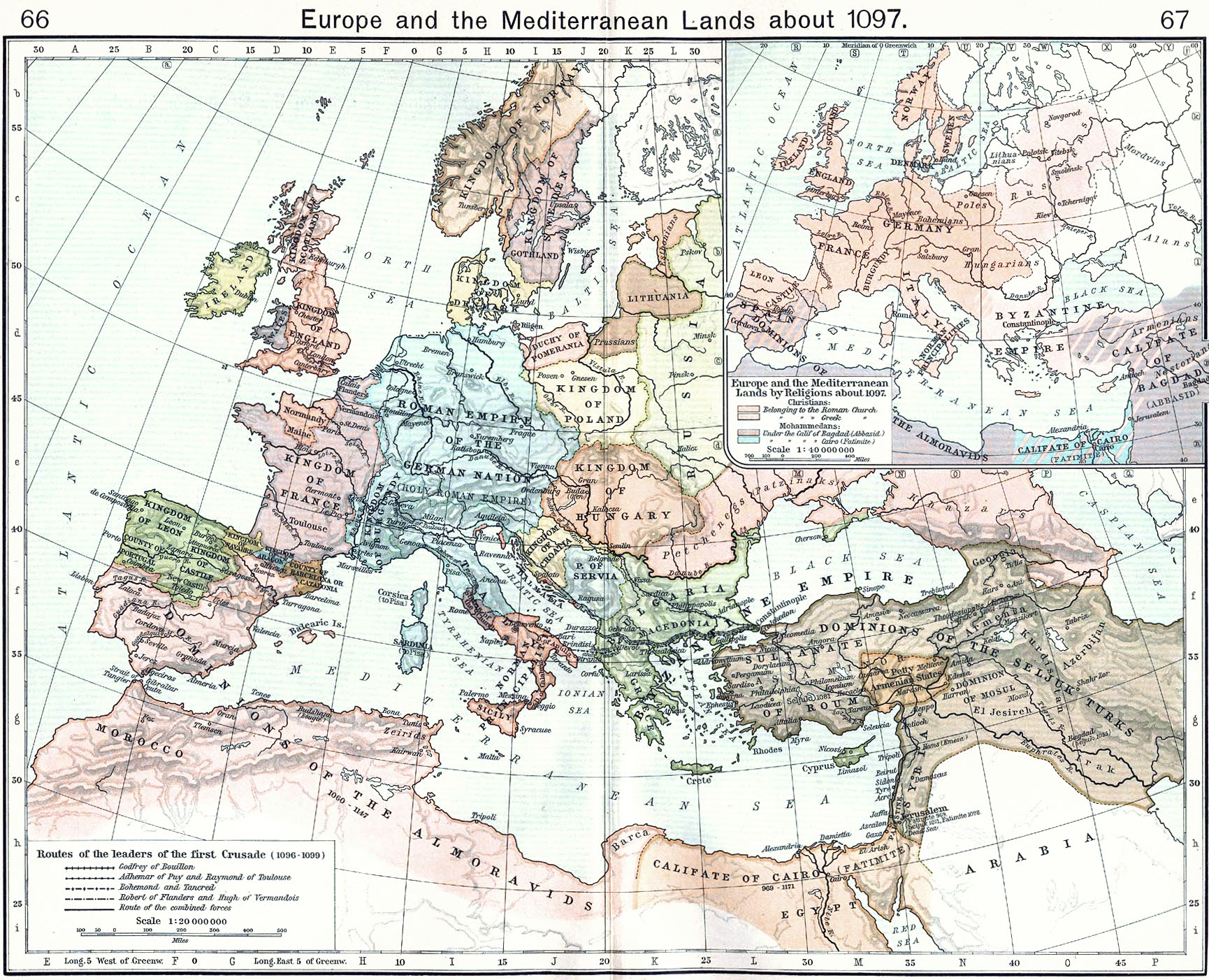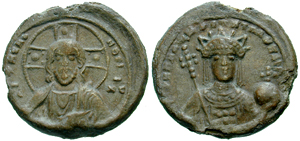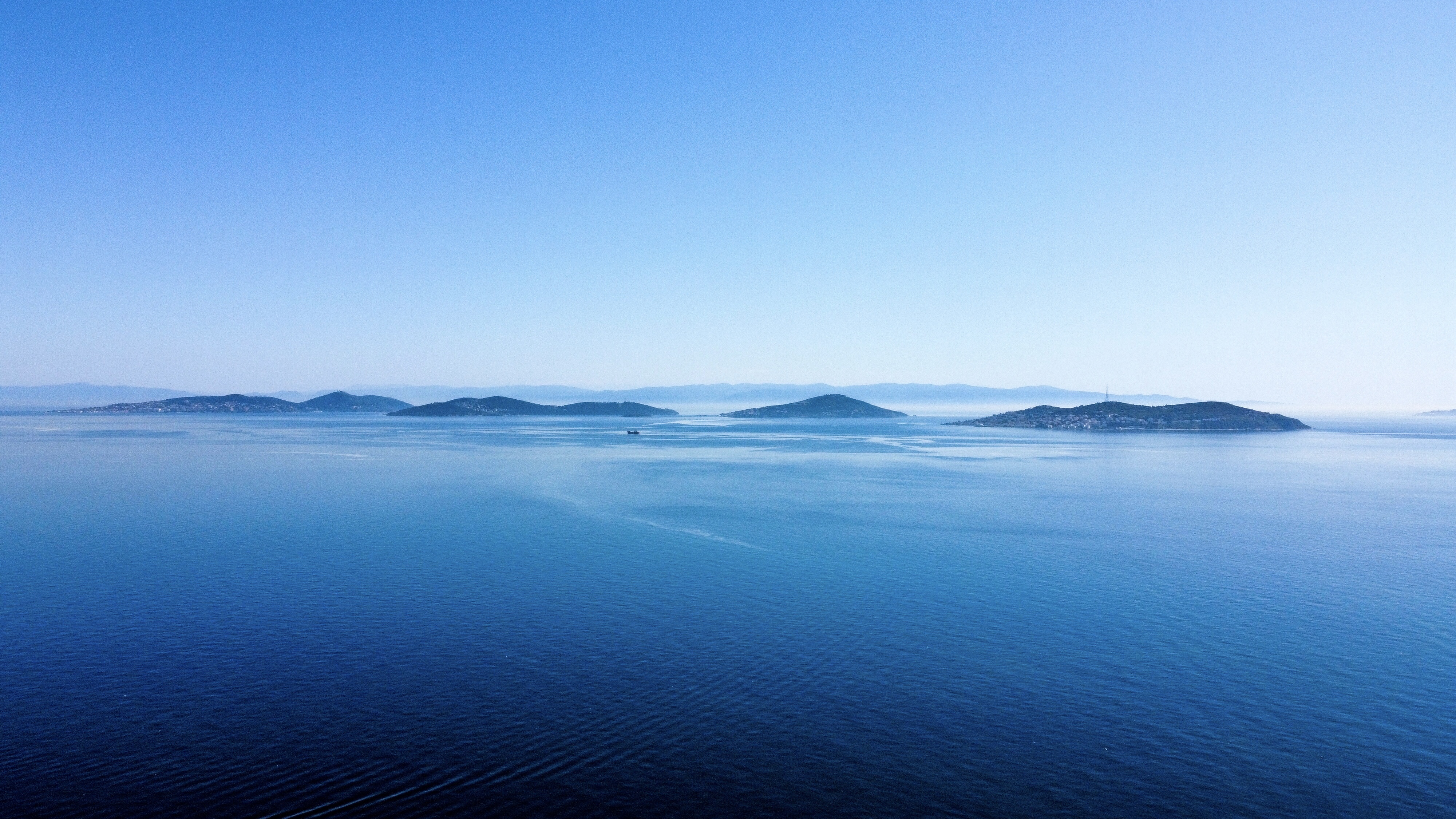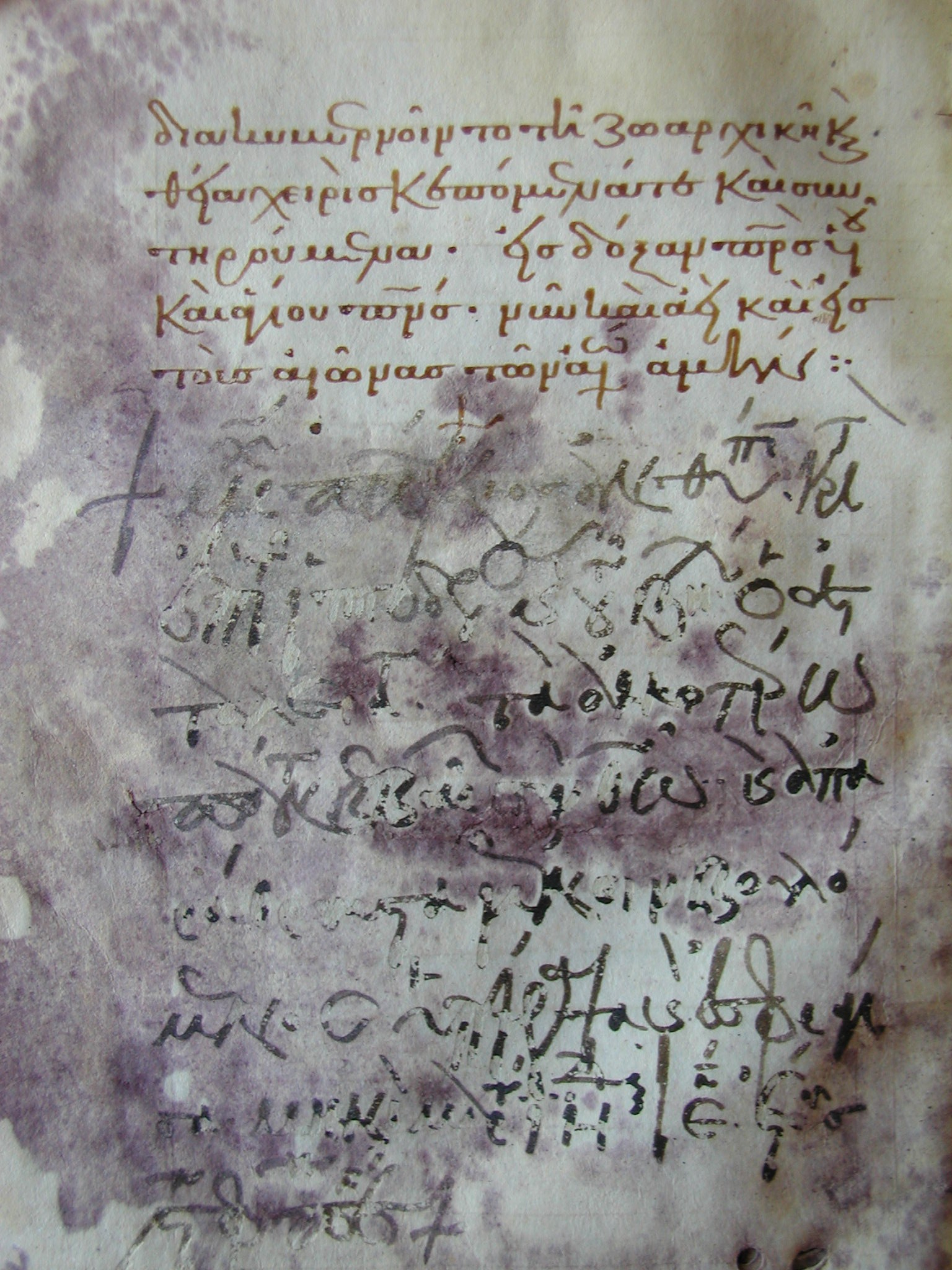|
Konstantios Doukas
Konstantios Doukas ( el, Κωνστάντιος Δούκας, 1060s – 18 October 1081), Latinized as Constantius Ducas, was a junior Byzantine emperor from 1060 to 1078. Konstantios was the son of Emperor Constantine X Doukas and Empress Eudokia Makrembolitissa. Upon his birth, he was elevated to junior emperor, along with his brother Michael VII. He remained as junior emperor during the reigns of Constantine, Romanos IV, and Michael VII. He was handed over to Nikephoros III, a usurper, following the abdication of Michael VII. He was sent to live in a monastery, where he stayed until recalled by Alexios I Komnenos, who made him a general. He was killed in 1081, in the Battle of Dyrrhachium. Sources sometimes confuse him with his brother, Constantine Doukas. Life Konstantios Doukas was born in the 1060s, the son of Emperor Constantine X and Empress Eudokia Makrembolitissa. He was born during Constantine's reign; because of this, he was porphyrogennetos. His father Constan ... [...More Info...] [...Related Items...] OR: [Wikipedia] [Google] [Baidu] |
Byzantine Emperor
This is a list of the Byzantine emperors from the foundation of Constantinople in 330 AD, which marks the conventional start of the Eastern Roman Empire, to its fall to the Ottoman Empire in 1453 AD. Only the emperors who were recognized as legitimate rulers and exercised sovereign authority are included, to the exclusion of junior co-emperors (''symbasileis'') who never attained the status of sole or senior ruler, as well as of the various usurpers or rebels who claimed the imperial title. The following list starts with Constantine the Great, the first Christian emperor, who rebuilt the city of Byzantium as an imperial capital, Constantinople, and who was regarded by the later emperors as the model ruler. It was under Constantine that the major characteristics of what is considered the Byzantine state emerged: a Roman polity centered at Constantinople and culturally dominated by the Greek East, with Christianity as the state religion. The Byzantine Empire was the direct le ... [...More Info...] [...Related Items...] OR: [Wikipedia] [Google] [Baidu] |
Battle Of Dyrrhachium (1081)
The Battle of Dyrrhachium took place on October 18, 1081 between the Byzantine Empire, led by the Emperor Alexios I Komnenos (r. 1081–1118), and the Normans of southern Italy under Robert Guiscard, Duke of Apulia and Calabria. The battle was fought outside the city of Dyrrhachium (present-day Durrës in Albania), the major Byzantine stronghold in the western Balkans, and ended in a Norman victory. Following the Norman conquest of Byzantine Italy and Saracen Sicily, the Byzantine emperor, Michael VII Doukas (r. 1071–1078), betrothed his son to Robert Guiscard's daughter. When Michael was deposed, Robert took this as an excuse to invade the Byzantine Empire in 1081. His army laid siege to Dyrrhachium, but his fleet was defeated by the Venetians. On October 18, the Normans engaged a Byzantine army under Alexios I Komnenos outside Dyrrhachium. The battle began with the Byzantine right wing routing the Norman left wing, which broke and fled. Varangian mercenaries joined in t ... [...More Info...] [...Related Items...] OR: [Wikipedia] [Google] [Baidu] |
Byzantine–Norman Wars
Wars between the Normans and the Byzantine Empire were fought from 1040 until 1185, when the last Norman invasion of the Byzantine Empire was defeated. At the end of the conflict, neither the Normans nor the Byzantines could boast much power, as by the mid-13th century exhaustive fighting with other powers had weakened both, leading to the Byzantines losing Asia Minor to the Ottoman Empire in the 15th century, and the Normans losing Sicily to the Hohenstaufen. Norman conquest of southern Italy The Normans' initial military involvement in southern Italy was on the side of the Lombards against the Byzantines. Eventually, some Normans, including the powerful de Hauteville brothers, served in the army of George Maniakes during the attempted Byzantine reconquest of Sicily, only to turn against their employers when the emirs proved difficult to conquer. By 1030, Rainulf became count of Aversa, marking the start of permanent Norman settlement in Italy. In 1042, William de Hauteville ... [...More Info...] [...Related Items...] OR: [Wikipedia] [Google] [Baidu] |
Irene Doukaina
Irene Doukaina or Ducaena ( el, , ''Eirēnē Doukaina''; – 19 February 1138) was a Byzantine Greek empress by marriage to the Byzantine emperor Alexios I Komnenos. She was the mother of Emperor John II Komnenos and the historian Anna Komnene. Life Irene was born in 1066 to Andronikos Doukas and Maria of Bulgaria, granddaughter of Ivan Vladislav of Bulgaria. Andronikos was a nephew of Emperor Constantine X Doukas and a cousin of Michael VII. Succession of Alexios Irene married Alexios in 1078, when she was still eleven years old. For this reason, the Doukas family supported Alexios in 1081, when a struggle for the throne erupted after the abdication of Nikephoros III Botaneiates. Alexios' mother, Anna Dalassene, a lifelong enemy of the Doukas family, pressured her son to divorce the young Irene and marry Maria of Alania, the former wife of both Michael VII and Nikephoros III. Irene was in fact barred from the coronation ceremony, but the Doukas family convinced the Pat ... [...More Info...] [...Related Items...] OR: [Wikipedia] [Google] [Baidu] |
Propontis
The Sea of Marmara,; grc, Προποντίς, Προποντίδα, Propontís, Propontída also known as the Marmara Sea, is an inland sea located entirely within the borders of Turkey. It connects the Black Sea to the Aegean Sea via the Bosporus and Dardanelles straits, separating the country's European and Asian sides. The Sea of Marmara is a small sea with an area of , and dimensions of . Its greatest depth is . Name The Sea of Marmara is named after the largest island to its south side which is called Marmara Island because it is rich in marble (Greek (''mármaron'') "marble)." In classical antiquity it was known as the Propontis, which is derived from the Greek words ''pro-'' (before) and ''pontos'' (sea) and reflects the fact that the Ancient Greeks used to sail through it to reach the Black Sea that they called Pontos. Mythology In Greek mythology, a storm on the Propontis brought the Argonauts back to an island they had left, precipitating a battle in which ... [...More Info...] [...Related Items...] OR: [Wikipedia] [Google] [Baidu] |
Princes Islands
The Princes' Islands ( tr, Prens Adaları; the word "princes" is plural, because the name means "Islands of the Princes", el, Πριγκηπονήσια, ''Pringiponisia''), officially just Adalar ( en, Islands); alternatively the Princes' Archipelago; is an archipelago off the coast of Istanbul, Turkey, in the Sea of Marmara. The islands constitute the Adalar district of Istanbul Province. With a total land area of , it is the eighth smallest district in Istanbul, and with a permanent population of 16,372 (2021), it is by far the least populous district in Istanbul. They consist of four larger islands, Büyükada ("Big Island") with an area of , Heybeliada ("Saddlebag Island") with an area of , Burgazada ("Fortress Island") with an area of , Kınalıada ("Henna Island") with an area of , and five much smaller ones, Sedef Adası ("Mother-of-Pearl Island") with an area of , Yassıada ("Flat Island") with an area of , Sivriada ("Sharp Island") with an area of , Kaşık Adası (" ... [...More Info...] [...Related Items...] OR: [Wikipedia] [Google] [Baidu] |
Tonsure
Tonsure () is the practice of cutting or shaving some or all of the hair on the scalp as a sign of religious devotion or humility. The term originates from the Latin word ' (meaning "clipping" or "shearing") and referred to a specific practice in medieval Roman Catholic Church, Catholicism, abandoned by papal order in 1972. Tonsure can also refer to the secular practice of shaving all or part of the scalp to show support or sympathy, or to designate mourning. Current usage more generally refers to cutting or shaving for monks, devotees, or mystics of any religion as a symbol of their renunciation of worldly fashion and esteem. Tonsure is still a traditional practice in Catholicism by specific religious orders (with papal permission). It is also commonly used in the Eastern Orthodox Church for newly baptised members and is frequently used for Buddhism, Buddhist novices, Bhikkhu, monks, and Bhikkhunī, nuns. The complete shaving of one's head bald, or just shortening the hair, exists ... [...More Info...] [...Related Items...] OR: [Wikipedia] [Google] [Baidu] |
Battle Of Kalavrye
The Battle of Kalavrye (also Kalavryai or Kalavryta) was fought in 1078 between the Byzantine imperial forces of general (and future emperor) Alexios Komnenos and the rebellious governor of Dyrrhachium, Nikephoros Bryennios the Elder. Bryennios had rebelled against Michael VII Doukas () and had won over the allegiance of the Byzantine army's regular regiments in the Balkans. Even after Doukas's overthrow by Nikephoros III Botaneiates (), Bryennios continued his revolt, and threatened Constantinople. After failed negotiations, Botaneiates sent the young general Alexios Komnenos with whatever forces he could gather to confront him. The two armies clashed at Kalavrye on the Halmyros River in what is now European Turkey. Alexios Komnenos, whose army was considerably smaller and far less experienced, tried to ambush Bryennios's army. The ambush failed, and the wings of his own army were driven back by the rebels. Alexios barely managed to break through with his personal retinue, b ... [...More Info...] [...Related Items...] OR: [Wikipedia] [Google] [Baidu] |
Michael Attaleiates
Michael Attaleiates or Attaliates ( grc-gre, Μιχαήλ Ἀτταλειάτης, Michaḗl Attaleiátēs, ; – 1080) was a Byzantine Greek chronicler, public servant and historian active in Constantinople and around the empire's provinces in the second half of the eleventh century. He was a younger contemporary (possibly even a student) of Michael Psellos and likely an older colleague of John Skylitzes, the two other Byzantine historians of the eleventh century whose work survives. Life and work Michael Attaleiates was probably a native of Attaleia (now Antalya, in Turkey) and moved to Constantinople some time between, approximately, 1030 and 1040 to pursue studies in law. During years of service in the empire's judicial system he built a small private fortune. Prominence on the judge's bench also brought him to the attention of a number of emperors who rewarded him with some of the highest honours available to civil servants (''patrikios'' and ''anthypatos''). In 1072, Attal ... [...More Info...] [...Related Items...] OR: [Wikipedia] [Google] [Baidu] |
Monastery Of Stoudios
The Monastery of Stoudios, more fully Monastery of Saint John the Forerunner "at Stoudios" ( grc-gre, Μονή του Αγίου Ιωάννη του Προδρόμου εν τοις Στουδίου, Monē tou Hagiou Iōannē tou Prodromou en tois Stoudiou), often shortened to Stoudios, Studion or Stoudion ( la, Studium), was a Greek Orthodox monastery in Constantinople (modern-day Istanbul), the capital of the Byzantine Empire. The residents of the monastery were referred to as Stoudites (or Studites). Although the monastery has been derelict for half a millennium, the laws and customs of the Stoudion were taken as models by the monks of Mount Athos and of many other monasteries of the Orthodox world; even today they have influence. The ruins of the monastery are situated not far from the Propontis (Marmara Sea) in the section of Istanbul called Psamathia, today's Koca Mustafa Paşa. It was founded in 462 by the consul Flavius Studius, a Roman patrician who had settled in Con ... [...More Info...] [...Related Items...] OR: [Wikipedia] [Google] [Baidu] |
Nikephoros Bryennios The Elder
Nikephoros Bryennios the Elder ( el, Νικηφόρος Βρυέννιος ο πρεσβύτερος), Latinized as Nicephorus Bryennius, was a Byzantine Greek general who tried to establish himself as Emperor in the late eleventh century. His contemporaries considered him the best tactician in the empire. Early career Nikephoros had steadily risen through the ranks of the military, to the point that he was given an important command by Romanos IV at the Battle of Manzikert in 1071. Commanding the left wing of the Byzantine forces, he was one of the very few generals who performed well at that battle.Norwich, ''Byzantium: The Decline and Fall'', pg. 3 In 1072–1073, he served as '' doux'' of Bulgaria, where he reimposed Byzantine control after a series of uprisings, and was afterwards elevated to the important position of ''doux'' of Dyrrhachium. In about 1077 Nikephoros, by now the former governor of Dyrrhachium, became disgusted with Michael VII's treaty with the Seljuk ... [...More Info...] [...Related Items...] OR: [Wikipedia] [Google] [Baidu] |
Anna Vsevolodovna Of Kiev
Anna Vsevolodovna of Kiev also called ''Ianka'' (died 3 November 1112), was a Rus' princess and nun, noted for having introduced schools for girls in Kievan Rus. She was the daughter of Vsevolod I of Kiev and Anastasia. She was engaged to the Byzantine prince Konstantios Doukas Konstantios Doukas ( el, Κωνστάντιος Δούκας, 1060s – 18 October 1081), Latinized as Constantius Ducas, was a junior Byzantine emperor from 1060 to 1078. Konstantios was the son of Emperor Constantine X Doukas and Empress Eud ... in 1074. The marriage never materialized, as Constantine Dukas was forced to become a monk in 1081 and died in 1082 before they could be married. In 1089, Anna lead an embassy to Byzantium with the purpose of selecting a new metropolitan of Rus.Natalia Pushkareva, Women in Russian History: From the Tenth to the Twentieth Century', During her stay in Constantinople, she was impressed by the scholarly learning in Byzantium, at that time a center of cult ... [...More Info...] [...Related Items...] OR: [Wikipedia] [Google] [Baidu] |









_Monastery.jpg)